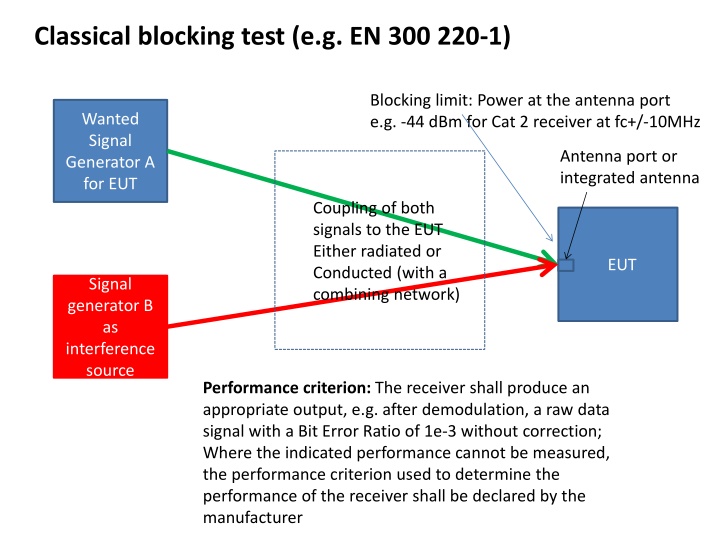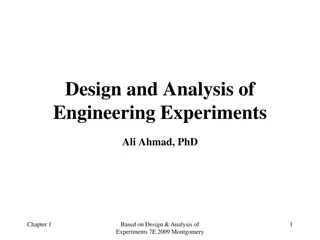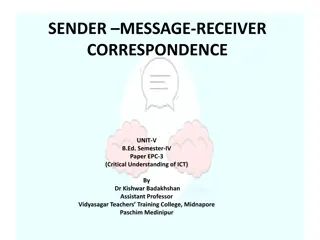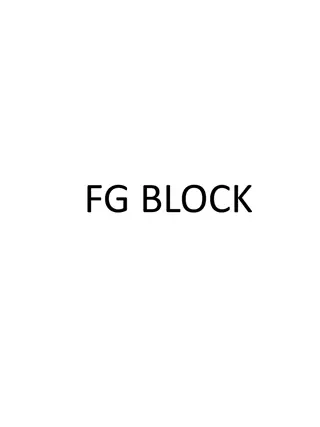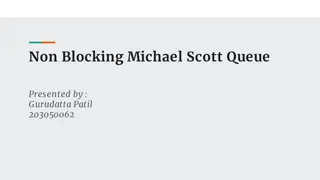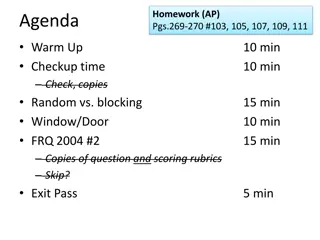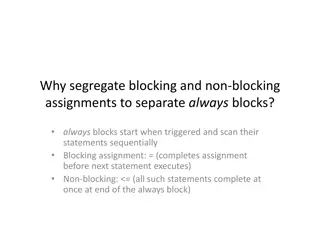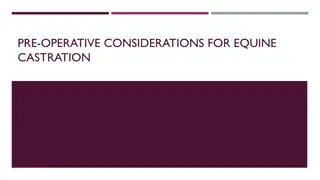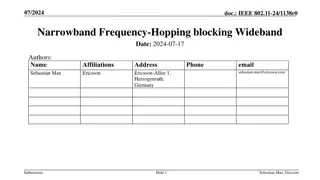Classical Blocking Test and Receiver Performance Criteria
Classical blocking test procedures such as EN 300.220-1 outline limits on power at the antenna port for receivers, with criteria for achieving desired performance levels without errors. Manufacturers must declare appropriate performance criteria for devices, even if certain performance metrics are not directly measurable. The importance of understanding failure criteria in digital systems and the proximity of performance degradation to system failure highlight the need for precise testing methods. In-band, out-of-band, and remote-band handling standards like EN 301.091-1 establish field strength limits at the EUT to ensure proper reception of target properties.
Download Presentation

Please find below an Image/Link to download the presentation.
The content on the website is provided AS IS for your information and personal use only. It may not be sold, licensed, or shared on other websites without obtaining consent from the author.If you encounter any issues during the download, it is possible that the publisher has removed the file from their server.
You are allowed to download the files provided on this website for personal or commercial use, subject to the condition that they are used lawfully. All files are the property of their respective owners.
The content on the website is provided AS IS for your information and personal use only. It may not be sold, licensed, or shared on other websites without obtaining consent from the author.
E N D
Presentation Transcript
Classical blocking test (e.g. EN 300 220-1) Blocking limit: Power at the antenna port e.g. -44 dBm for Cat 2 receiver at fc+/-10MHz Wanted Signal Generator A for EUT Antenna port or integrated antenna Coupling of both signals to the EUT Either radiated or Conducted (with a combining network) EUT Signal generator B as interference source Performance criterion: The receiver shall produce an appropriate output, e.g. after demodulation, a raw data signal with a Bit Error Ratio of 1e-3 without correction; Where the indicated performance cannot be measured, the performance criterion used to determine the performance of the receiver shall be declared by the manufacturer
Classical blocking test (e.g. EN 300 220-1) Test procedure 1. Signal generator B off 2. Signal generator A shall be set to the minimum level which gives the wanted performance criterion of the EUT or the reference sensitivity, whichever is the higher 3. Signal generator A shall then be increased by 3 dB Putting the EUT into a reproducable and sensitive status 4. Signal generator B is then switched on and the signal amplitude is adjusted to the minimum level at which the wanted performance criterion is not achieved. 5. The blocking level is then the conducted power received from generator B at the EUT antenna connector. Determining the conducted power at the EUT antenna port where the performance criterion ist just met
Classical blocking test (e.g. EN 300 220-1) The performance criterion is a crucial point: the listed performance criteria such as BER/PER in HS are not always measuredable, E.g. a simple handheld temperatur sensor with integrated antenna may only have a display for the temperature, no external connector and only an error-sign within the display indicating that the device is outside the reception area For the tests the manufacturer needs to declare an appropriate performance criterion For the above temperature sensor the declared performance criterion could be that the EUT should be put into a reception situation where the error- sign is just off For radiodetermination devices there is no performance criterion listed in 220, but a false alarm rate could possibly be declared and measured Experience shows that in digital systems, the first occurrence of degradation in any quality parameter is very close to the point of total system failure or synchronisation loss. This is mainly due to the error correction deployed in almost all digital systems. The necessary interference levels for first performance degradation versus sync. loss are typically only very few dB apart. This is especially true in measurements of overloading effects such as blocking and intermodulation. Due to this behaviour, the exact definition of the failure criterion (as well as the ability to measure it) is often not so important. In many cases, a simple go/no-go test can be used as the failure criterion.
Receiver in-band, out-of-band and remote-band handling (e.g. EN 301 091-1) limit: field strength at EUT, e.g. 0,17 V/m at fc +/-1GHz Antenna port or integrated antenna Defined target in a given distance Coupling of both signals to the EUT radiated EUT Signal generator B as interference source Performance criterion: The wanted performance criterion is that the EUT shall indicate the properties of a given target at a given distance. The relevant properties (e.g. presence, range, relative speed, azimuth angle) shall be declared by the manufacturer; the type and RCS of the target and the distance shall be declared by the manufacturer
Receiver in-band, out-of-band and remote-band handling (e.g. EN 301 091-1) Test procedure 1. Signal generator B off 2. The target type (RCS), position and distance relative to the EUT shall be as declared by the manufacturer 3. The EUT shall be powered ON. Achievement of the relevant wanted performance criterion shall be verified. Putting the EUT into a status which is to be declared by the manufacturer 4. The EUT shall achieve the wanted performance criterion, in the presence of the unwanted signals 5. The unwanted signal transmitter shall be powered ON at a lower level of 20 dB below the specified unwanted signal level 6. To simulate real use-cases, the unwanted signals level shall be increased in 5 dB steps until either the relevant wanted performance criterion is not met or the specified unwanted signal level is reached. The unwanted signal shall be held at each power step for at least 5 s. Determining if the EUT Achieves the wanted performance in presence of the unwanted signals
Differences EN 300 220-1 blocking EN 301 091-1 Interferrer handling Limits Power at antenna port of the EUT Field strength at EUT convertible Performance criterion Absolut limit for audio and digital systems (BER 1e-3); other criteria can be declared All criteria to be declared by the manufacturer; Guidance on an appropriate performance would be sensible for EN 301 091-1 (e.g. minimum false alarm rate?) EUT+Receiver configuration during Rx tests Wanted signal = 3dB + Sensitivity The relevant properties (e.g. presence, range, relative speed, azimuth angle) to be declared by the manufacturer Guidance how to achieve an reproducable sensitive status of the EUT would be sensible for EN 301 091-1
